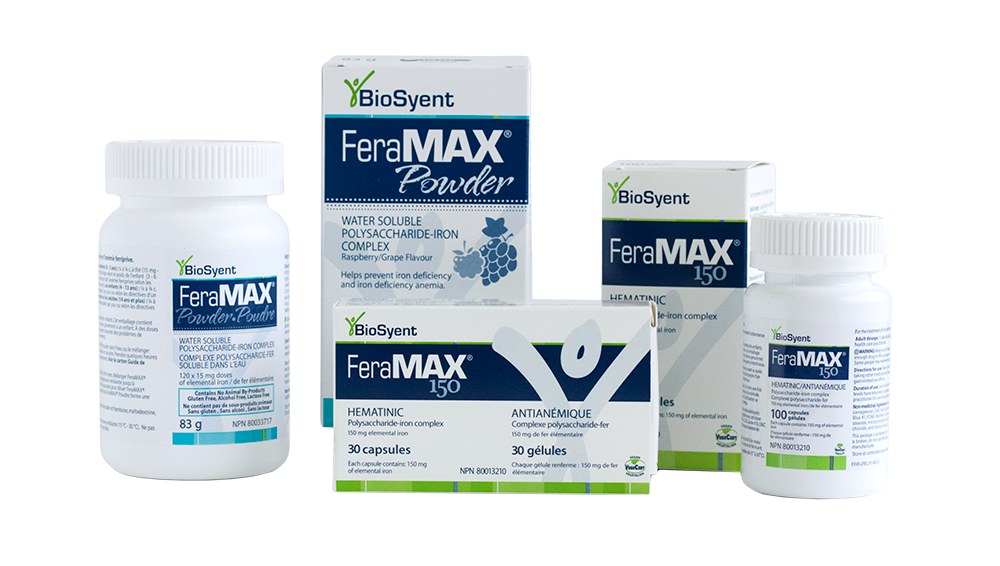A Woman’s Need for Iron
Men and women have different requirements. The main reason for this is mostly due to monthly menstruation. Menstruation is the most common cause of iron loss worldwide. When blood is lost every month during menstruation, the iron within those red blood cells is also lost. A person is considered to have heavy menstrual bleeding when their menstrual period is typically over 80 ml. Therefore, iron intake is particularly important in women and in those who experience heavy periods.
In turn, excessive blood loss and the reduction in iron via menstruation could impact blood flow and lead to missed or late periods and it can turn into a vicious cycle.
It is estimated that 20% of women of childbearing age are iron deficient and 50% of pregnant women develop iron deficiency. Each life stage can bring about different causes (or types) of the condition, which include:
• Increased blood volume
• Blood loss
• Reduced absorption

Age 10 to 18: Puberty, Menstruation & Teenage years
During her adolescent years, a girl’s risk of iron deficiency – due to blood loss or increased blood volume – increases. Puberty brings with it rapid growth spurts and menstruation (along with pimples and embarrassing fashion choices.) As mentioned above, the body requires more iron to accommodate the higher blood volume during growth spurts. Unless the young lady is getting additional iron through an iron-rich diet or an oral iron supplement, her iron levels may have trouble keeping up. Add to this the blood lost each month due to menstruation and you’ve got a perfect storm for iron deficiency.
Age 19 to 45: Childbearing Age
We’ve talked about how blood loss due to menstruation increases the risk of iron deficiency. Pregnancy also greatly increases the risk because of increased blood volume. A woman’s body will produce almost 50% more blood during pregnancy to keep up with her body’s growth and provide iron for her baby. Come the final trimester, the baby begins storing iron for the first 6 months of his/her life, and without proper iron supplementation both mother and baby can be at risk.
Iron is also important during breastfeeding because a woman still needs to meet her iron requirements as usual and to provide enough for the production of breast milk. Whilst breast milk naturally contains iron the good thing is that babies are born with iron stores and this is usually sufficient to last them until 6 months of age when they start to venture into solids.
Age 55+: Golden Years
In a woman’s golden years, blood loss and poor absorption are the most common causes of iron deficiency. Use of a non-steroidal anti-inflammatory drug (NSAID) and aspirin over many years can damage the gastrointestinal tract and cause bleeding. Also, not producing enough stomach acid can interfere with iron absorption. Women in their golden years may also experience decreased appetite and consume a nutrient-poor diet that doesn’t contain enough iron, further increasing their risk of developing iron deficiency. Finally, medications and chronic conditions (which are more common during this stage of life) can also increase the risk.
Vegans and Vegetarians
People give up eating meat and animal products such as milk, cheese, and eggs for many reasons.
But doing so may increase the risk of iron deficiency anemia, a potentially serious condition in which the body does not make enough oxygen-bearing red blood cells.
For vegetarians who eliminate meat, anemia can be due to an iron deficiency. For vegans, who give up all animal products including dairy, eggs, and even honey, anemia can also be caused by vitamin B12 deficiency.
Check to see if you have any signs of iron deficiency
Iron Deficiency / Iron Deficiency Anemia Symptoms Tracker for Adults and Children
Think you might be Iron Deficient?
Many people struggle to maintain their iron health. The causes and symptoms differ depending on the individual

Would you like to hear from a Pharmacist about FeraMAX®
Canadian Pharmacist counselling is now available via email.
- Email: feramax@biosyent-int.com
Note: Response may be delayed on account of time difference
